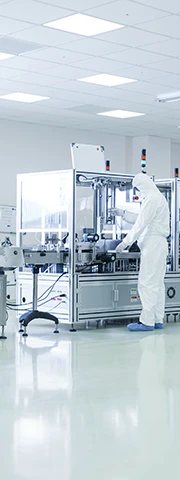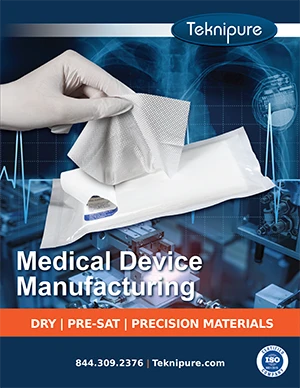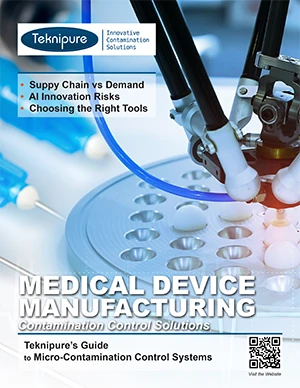COVID-19 has caused disturbances to supplies and unprecedented changes in healthcare. Still, advances in medical devices and developments in related products must proceed. There are some continuing challenges ahead for the industry, but also exciting and noteworthy things to look forward to in this market, not only in 2022 but for many years to come. Below, we have detailed 4 trends for medical device manufacturers to be aware of, plan for, and incorporate into operational planning and activities.
The Continuation of Global Supply Chain Issues
As we’ve all seen with many different commodities, the supply chain of medical devices has been affected by the COVID-19 crisis and geopolitical factors. The shortage of semiconductors, often called “chipageddon”, is expected to continue through 2022, and, according to some experts, into 2023. Other materials needed to fabricate medical devices are in short supply too, and often have increased lead times than before. A financial blow is expected, though some manufacturers may experience an even worse impact, and struggle to just survive this situation.
While some forces affecting the supply chain are out of the medical device makers’ hands, others are not necessarily. Companies need to be proactive and agile during this difficult time, which means finding different vendors, using substitute parts and supplies (which could require some product design changes), making sure the lead times on materials from the network of vendors allows production to continue with the least amount of downtime, and constantly communicating with suppliers in order to prepare for potential future inventory issues.
The healthcare industry provides products that are in high demand, and subject to stringent regulatory and design specifications. Precision and high levels of production are hallmarks of medical devices, and without both of these, people who depend on life-saving equipment could end up in a position that no one would find reasonable or even humane. Until COVID-19 and political climate issues are resolved, supply chain issues can be somewhat mitigated through analytics, predictive models, agility and wiliness to pivot, and a proactive approach to the situation.
Diagnostics at the Point-of-Care Will Continue to Evolve
There were some good things to come out of the COVID-19 pandemic, and one of them in the healthcare field was the development of tools to better diagnose at the point-of-care. Let’s take just the United States as an example to illustrate. The urgent need to be able to test the population for a rapidly spreading viral infection caused diagnostic instrument companies to: first, quickly develop the actual SARS-CoV-2 antigen tests; and second, to figure out how the samples ready for testing could be processed quickly yet accurately, efficiently, and as locally as possible. Directly following, more machines capable of performing the tests were needed, and when lists of those already housed in medical centers and labs across the country showed too little processing capability, these medical devices were modified for the critical job at hand. This illustration represents only the very beginning of accelerated progress in point-of-care diagnostics precipitated by the SARS-CoV-2 virus (which causes the COVID-19 sickness). Some other important developments you may recall during the pandemic include rapid antigen, PCR, molecular, antibody (serologic), and at-home tests, as well as determining the accuracy of nasal versus nasopharyngeal swabs for antigen testing, and blood processing for antibodies.
There’s no doubt the novel coronavirus that swept the globe for the past almost 2 years has put enormous pressure on, and pushed into progress the engineers, manufacturers, and entire design and development process of medical diagnostic machines. Time-to-market became much shorter, and rapid-response technology became the new normal. Now that we know all of these things we thought couldn’t be done are not only possible but can happen successfully even with a fast-tracked timeline, the innovations are bound to keep coming, and the trend of evolving diagnostic capabilities at the point-of-care is also expected to continue in 2022.
“Elective” Procedures Are Making a Comeback, Bringing Demand Back to Medical Device Manufacturers
All non-essential – designated as “elective” – surgeries (including dental ones) were either cancelled or put on hold indefinitely during the COVID-19 pandemic out of concern for dwindling stock of personal protective equipment frontline workers needed to protect themselves from becoming infected with SARS-CoV-2, as well as keeping medical equipment available for those needing supportive care in medical facilities after contracting the virus. While in some selected areas this is still the case due to an uptick in COVID-related hospitalizations, for the most part, elective operations are once again being performed. The term “elective” can be somewhat misleading, as it not only implies it is the choice of a patient, but also often brings to mind cosmetic-type operations. In reality, a surgery is not considered essential if it can be scheduled in advance, a delay would not be life-threatening, or not performing it immediately would not result in the loss of life or limbs. Brian Cole, Chair of Surgery at Chicago’s Rush Oak Park Hospital, stated, “It’s a very nebulous term to call something elective.” During the height of the COVID-19 pandemic, very few operations were considered essential, and even some surgeries for heart problems and to remove cancerous tumors and growths didn’t make the cut.
Without those non-essential procedures, demand for many different types of devices and machines used in healthcare settings decreased, but now with the number of non-essential surgeries rising, medical technology companies are reporting higher growth than anticipated in their sales figures and the need for their wares. Clearly, the incredibly long list of operations that were designated as “elective” but were actually needed and life-prolonging has created a surge in the necessity for medical devices, instruments, and equipment, in specialties like orthopedics, cardiology, general surgery, and dental, just to name a few.
As these manufacturers scaled down when orders and production requirements fell, simply having qualified staff and facilities to ramp up production may result in fulfillment delays. Also, the ongoing materials and supply chain crises are making it more difficult to meet demand. Partnering with resources outside of the company to meet production needs is paramount, as is being proactive, during these challenges. For many medical device manufacturers, this means more investment in research and development, driving innovation, and developing new offerings, while being open to outsourcing certain functions such as engineering, prototyping, and testing. With the number of surgeries being performed steadily increasing, in addition to no end in sight to the supply chain bottlenecks, and producers of components (like semiconductors, for example) believing delays will continue well into 2022, expect the trends of amplified medical device demand and the need of manufacturers to pivot and be flexible to remain too.
Incorporating Technological Advances & Security into Medical Devices Will Continue
The Internet of Things (IoT), artificial intelligence (AI), and machine learning have been increasingly integrated into – and improving – products across all sectors, and along with their use comes the need for increased cybersecurity to protect both users and manufacturers. The market size for just AI in the healthcare industry is $10.4 billion this year, and by 2028, it’s anticipated to be $120.2 billion, with robotics used in surgeries and advancements in diagnostic tools contributing substantially to the figures (source: Grand View Research). Medical device manufacturers that can include technological advancements and Internet and computing connectivity into their products in an effective, efficient way will see high demand for their offerings.
Regulations regarding the use of IoT and AI are updated often, so an understanding of them is critical – even if a producer isn’t ready to incorporate these advancements quite yet. Machine learning may be a good first dip into the technology pool for certain manufacturers, as it can speed along the product development process and show the benefits and potential of moving to more digital and sophisticated medical devices. Cybersecurity is paramount, no matter how far into integrating technological advances a company is. Manufacturers must protect their customers’ data during development and production, and consideration must be given to how security of connected medical devices will be maintained and protected when they are in use out in the field. This doesn’t just go for products that will hit the market in the future – the security of any digitally-accessed device must be certain, and older ones that have been in the marketplace for a period of time can present more of a challenge. The lives of countless people depend on medical devices working properly, so keeping them safe and protected is not only a must, but a duty owed to those who put their trust in these devices and the manufacturers that make them.
Since cybersecurity is ever-evolving, with more sophisticated threats and new concerns almost daily, partnering with an expert in the field would be wise, and it is expected that such relationships will be long-term in nature. Integrating IoT, AI, machine learning, and increased protective measures are exciting trends that will shape the medical device manufacturing industry in 2022 and well beyond.
As you may have noticed, one trend has overarching effects on the others – what many consider to be two supply chain crises: one, arising from COVID-19; the other brought about by geopolitical influences. Quite simply stated, great, reliable partnerships and necessary raw materials are required to build point-of-care diagnostic tools, replenish inventories of equipment used in non-essential surgeries, and create the next generation of technology-powered devices. There is certainly unlimited opportunity for growth in this market! We hope the information supplied here will help deal with or circumvent the existing issue acting as an umbrella over many sectors, including the medical device industry.
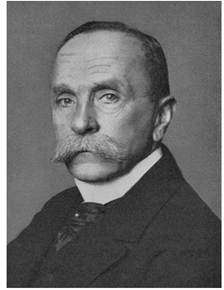
Professor Themistocles Glück – A Pioneer in Joint Replacement
In the United States, having a joint replaced ranks as one of the most common elective surgeries done. Referring back to our previous article, it’s notable to indicate that this type of operation, while classified as “elective” (as almost all orthopedic surgeries were during the worst period of COVID-19), is one that brings back quality of life by reducing chronic pain, increases mobility, and provides joint stability (and therefore, safety) to patients.
The average candidate for this surgery is a female in her mid-60s (though men are choosing to have it done more and more) and has degeneration in the affected joint usually from arthritis, according to study findings that were shared at an American Academy of Orthopedic Surgeons annual meeting.
In America each year, about 1.1 million total knee (64%) and hip (36%) joint replacement operations are performed by these physicians. Someone had to be the first to come up with the idea of even trying to replace these human hinges that allow us to bend our legs and rotate our hips.
That man’s name is Professor Themistocles Glück, and we’d venture to bet that patients were very interested in his work, since before joint replacements, the affected limb was either amputated (if you had a really bum knee) or parts of the bone were simply removed (if you hobbled on your hip). Sure, the souls who underwent these procedures gained back a bit of mobility, but definitely not stability.
Professor Glück was a German surgeon, and he pioneered joint replacements in both knees and hips. In 1860, using arthroscopy, he implanted a primitive-by-today’s-standards hinge joint made of ivory into a knee. Today, arthroscopy is frequently used to view the knee joint, and can diagnose and even treat an array of knee issues without the need for a large incision (which would require a much longer recovery time for patients and carries more possibility for complications during healing).
By 1890, Glück was ready to install an ivory and nickel-plated steel total knee joint, and a lucky teenage Berliner whose knee deteriorated from tuberculosis received it. Hip implant fixation was his next medical history-making feat. He created a ball-and-socket joint made of ivory, and affixed it to the patient’s thigh bone (femur) in 1891 with nickel-plated screws. While researching hip replacements, he proposed using cadaver joints and limbs that had been amputated, as well as the concept of bioavailability (or how well a body could tolerate the installation of foreign materials).
Teknipure is a Proud Member of
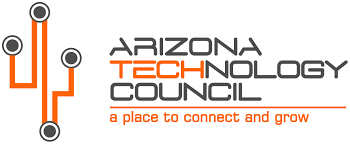
To learn more or to request technical data sheets, call us at 844.309.2376 or email us at Info@Teknipure.com. You may request samples or find quality certificates online.

